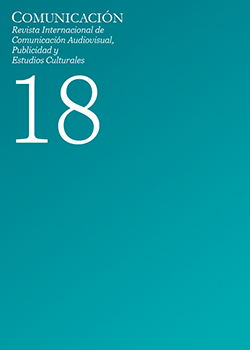Abstract
In our investigation we make an approach to the uses of atonal music in the opera of the Vienese School and the cinema that became known in the second half of the 20th century. Likewise, we make a comparative study on the meanings in both media, that are constituted by the needs within this two kinds of drama that have certain similarities and differences.
References
Adorno, T.H., y Eisler, H. (2005). El cine y la música. Madrid: Fundamentos.
Ansermet, E. (2000). Escritos sobre la música. Barcelona: Idea Books.
De Arcos, M. (2006). El experimentalismo en la música cinematográfica. Madrid: Fundación El Monte.
Eco, U. (1985). Sugli specchi e altri saggi. Milano: Bompiani.
Fraile Prieto, T. (2010). Música de cine en España: señas de identidad en la banda sonora contemporánea. Badajoz: Diputación Provincial de Badajoz.
García Laborada, J.M. (2004). La música moderna y contemporánea a través de los escritos de sus protagonistas. Sevilla: Editorial Doble J.
Griffiths, P. (1978). Modern Music: A Concise History from Debussy to Boulez. London: Thames & Hudson LTD.
Kramer, Stanley (1959). On the beach. USA: Stanley Kramer Productions.
Lack, R. (1999). La música en el cine. Madrid: Cátedra.
Metz, Christian (2002). Ensayos sobre la significación en el cine (1964-1968). Barcelona, Paidós.
Pendergast, R.M. (1977). Film music. New York: W. W. Norton & Company.
Ray, Nicholas (1961). King of kings. USA: Metro-Goldwyn-Mayer/ Samuel Bronston Productions.
Román, A. (2008). El lenguaje musivisual. Madrid: Visión libros.
Román, A. (2014). C.I.N.E.M.A. Composición e investigación en la música audiovisual. Madrid: Visión libros.
Wendkos, Paul (1971). The Mephisto waltz. USA: Quinn Martin productions.

This work is licensed under a Creative Commons Attribution-NonCommercial-ShareAlike 4.0 International License.
Copyright (c) 2020 Ruymán Martín Quintanal

